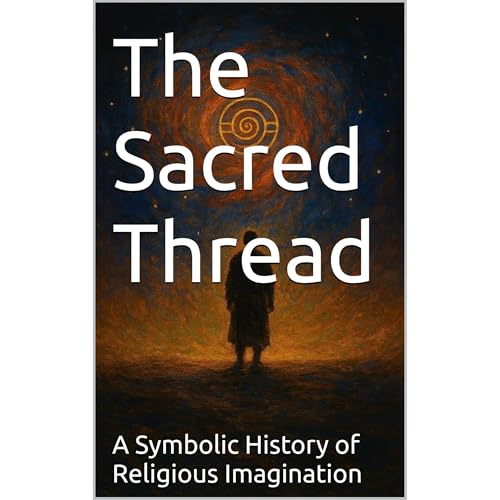
The Sacred Thread
A Symbolic History of Religious Imagination
No se pudo agregar al carrito
Add to Cart failed.
Error al Agregar a Lista de Deseos.
Error al eliminar de la lista de deseos.
Error al añadir a tu biblioteca
Error al seguir el podcast
Error al dejar de seguir el podcast
$0.00 por los primeros 30 días
Compra ahora por $8.95
-
Narrado por:
-
Virtual Voice
-
De:
-
Th. Lysander

Este título utiliza narración de voz virtual
Religion begins not with answers, but with questions—questions whispered into the dark, carved into bone, sung into flame. What happens when we die? Who made the thunder? Why do we suffer, love, dream? These questions are older than writing, older than cities. They are the pulse beneath myth, ritual, and prayer. They are the sacred thread.
This book follows that thread—from the earliest traces of belief among archaic humans to the complex spiritual landscapes of our present day. It is not a catalogue of doctrines, nor a chronology of institutions. It is a mythic history: a tapestry woven from stories, symbols, and the shifting ways humans have reached toward the divine.
We begin in the silence of prehistory, where burial rites and cave paintings hint at a world alive with spirit. We walk with shamans and storytellers, with priest-kings and prophets, with mystics who saw light in the dark. We listen to the voices of Confucius and Zoroaster, of Jesus and Muhammad, of Hildegard and Rumi. We witness the rise of sacred texts, the clash of empires, the birth of doubt. And we arrive in our own time—where the sacred is fractured, plural, and quietly returning in unexpected forms.
Throughout this journey, we ask not only what people believed, but why they believed—and how those beliefs shaped their lives, their art, their ethics, their sense of self. We explore religion as a poetic structure for meaning-making, a vessel for memory, a mirror for longing. We trace how myth becomes law, how ritual becomes identity, how silence becomes song.
This book is written for seekers and skeptics, for scholars and storytellers, for anyone who has ever felt the pull of something greater. It draws from anthropology, philosophy, philology, and literature—but it also draws from the heart. It honors both the grandeur and the grief of religion: its power to heal and to harm, to unite and to divide, to illuminate and to obscure.
Above all, it affirms that the sacred is not a relic of the past. It is a living thread—fragile, luminous, and still spinning.


